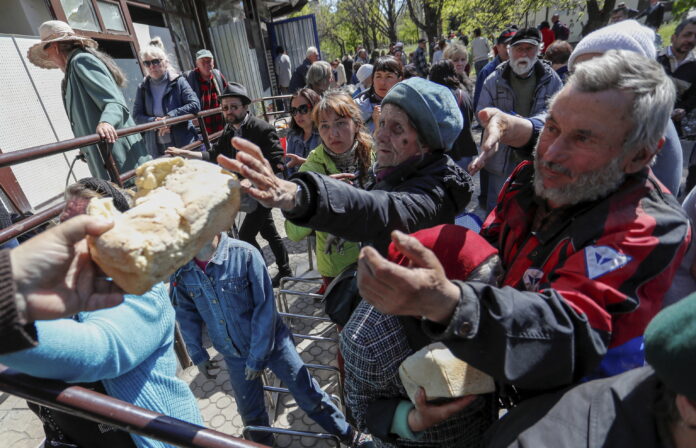After the bloody siege another scourge strikes the Russian-occupied port city. Highly infectious and very serious diseases such as cholera or dysentery rear their heads among the piles of unburied corpses, garbage and rubble resulting from the savage battle that occurred as a result of the Russian siege of Mariupol. This is stated by the mayor of Mariupol, Vadym Boychenko, exiled from the city. The leader placed by Moscow in his replacement denies such extreme.
“Cholera, dysentery and other infectious diseases are already in the city,” Boychenko stressed in statements to the BBC network. The mayor assures that, to prevent its expansion, the city has been quarantined. However, the Ukrainian authorities, limited in their ability to take samples on the ground, admit that they have not detected any cases of these diseases.
The United Nations has warned that, due to the conditions present in Mariupol, sewage has infiltrated the piped water system. Experts warn of the possibility of a “perfect storm” if storms and hot summer weather are added to the consequences of the war, triggering the levels of bacteria in the environment. Without confirming the presence of cholera or dysentery, the World Health Organization has described the health situation there as “great danger”.
Cholera is a disease of bacterial origin caused by a highly infectious virus in unsanitary conditions, which is why its appearance is usually related to the precarious conditions of poverty. It is characterized by acute diarrhea, which is accompanied by a rapid loss of fluids that can be fatal. Dysentery is similar in some symptoms and has become, throughout history, the negative protagonist of many wars.
Mariupol has been devastated. In the middle of last month, the last troops of the Ukrainian army left their redoubt in the town through an agreement with Russia. Since then, and although Moscow has promised to rebuild the damaged buildings – Kiev estimates that 90% of the city is in tatters – destruction continues to prevail. An informer who has traveled there with Russian approval has been able to record an esplanade with hundreds of graves, a symptom of the disaster suffered.
Before the war, about half a million people lived in Mariupol. It is unknown how many civilians remain at this time. kyiv has reported that at least 20,000 civilians have been forcibly deported to Russia. One more accusation has recently weighed on the Kremlin: the fear that it will use lethal chemical weapons or that, as a result of the fighting, chemical installations will be damaged, severely harming the population.
The focus of the Organization for the Prohibition of Chemical Weapons (OPCW) concerns is Severodonetsk, where one of the bloodiest battles since the beginning of the Russian invasion is taking place. According to Russian sources, Ukrainian fighters have taken up positions in Azot, an industrial zone in the eastern city that has a chemical plant. Last week, Ukrainian government forces reported the impact of Russian shells on a nitric acid tank. “Since the beginning of the conflict, the Technical Secretariat of the OPCW has closely followed the situation in Ukraine,” said this Friday the organization associated with the UN, whose director, Fernando Arias, met on the same day with the president of the parliament Ukrainian Ruslan Stefanchuk.
Conforms to The Trust Project criteria












